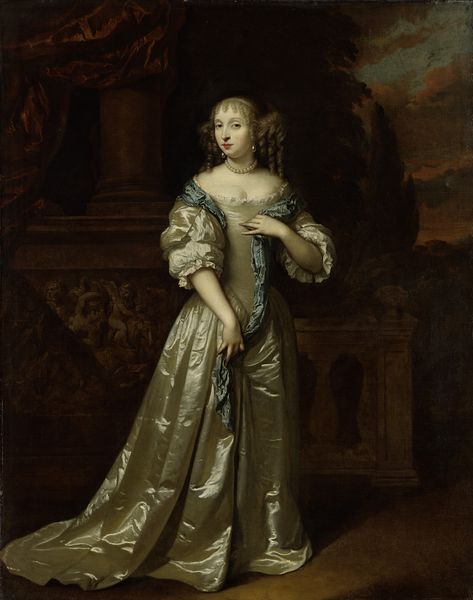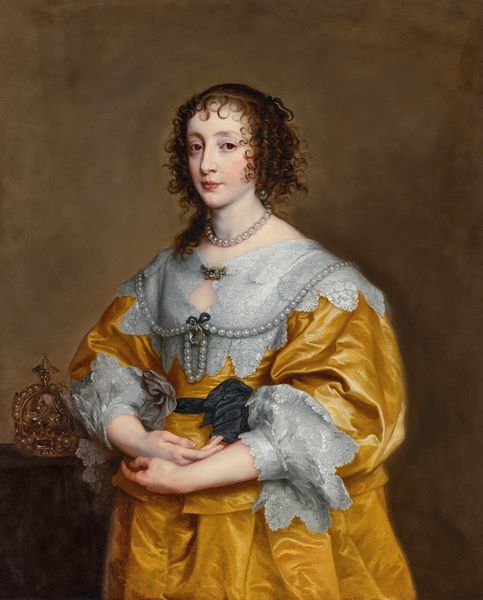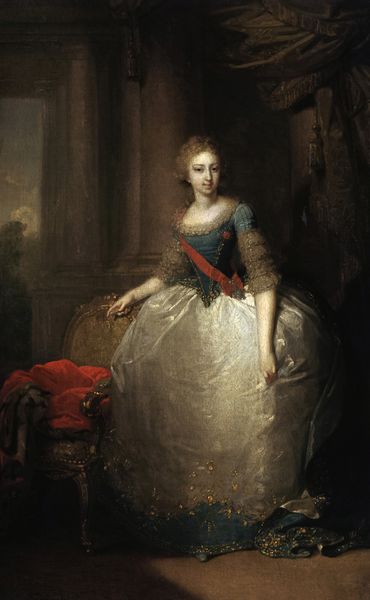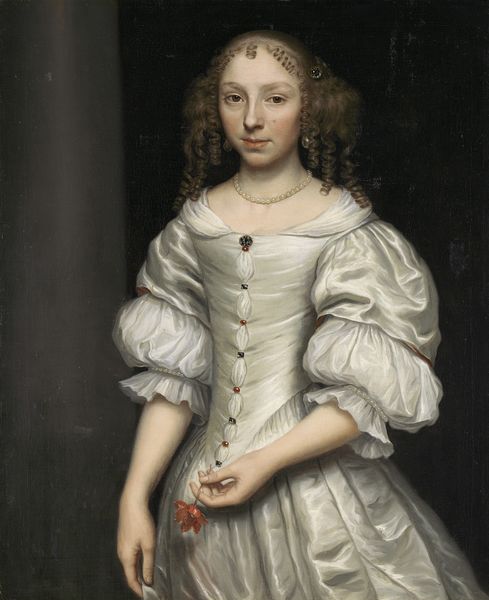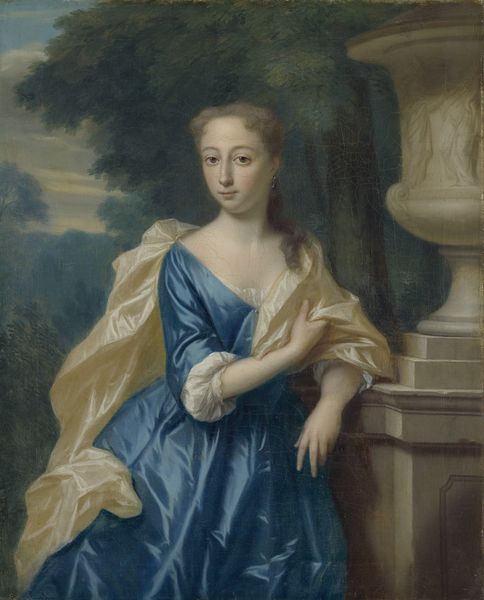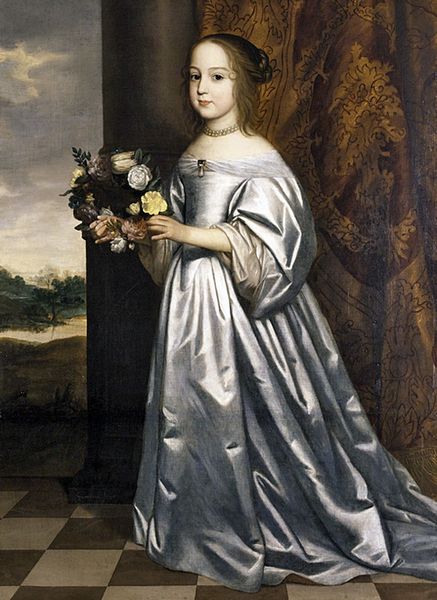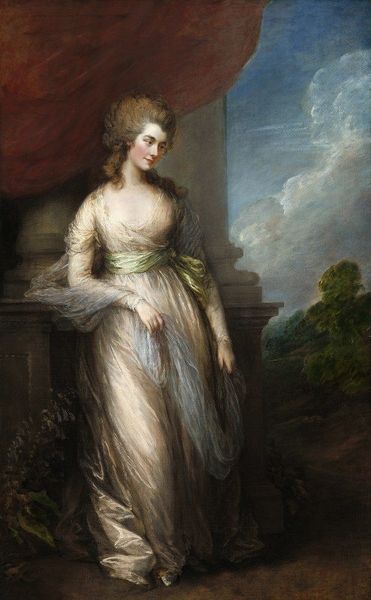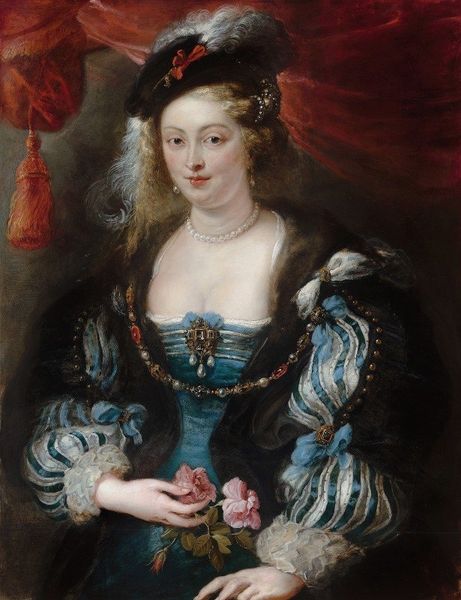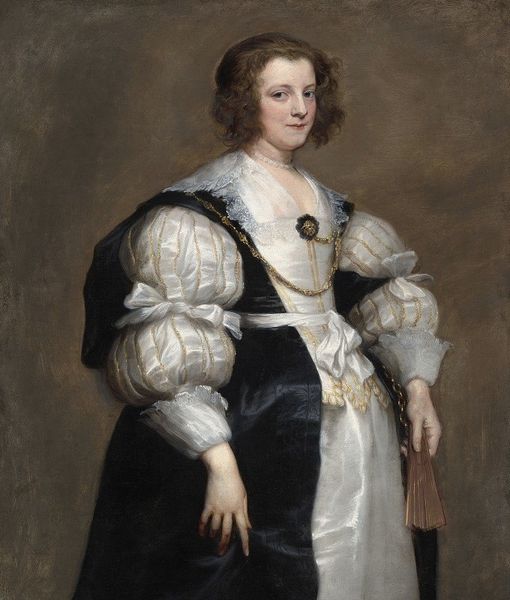
painting, oil-paint
#
portrait
#
narrative-art
#
baroque
#
painting
#
oil-paint
#
oil painting
#
history-painting
#
academic-art
Copyright: Public Domain: Artvee
Curator: Welcome. Today, we're looking at Anthony van Dyck's portrait of "Princess Mary, Daughter of Charles I," painted around 1637. Editor: She appears so demure, almost melancholic. The blues and grays lend the piece a somber yet dignified mood. Curator: Van Dyck, as a court painter, was instrumental in shaping the image of the Stuart monarchy. This painting, executed in oil on canvas, offers a window into the world of royal childhood and its inherent power dynamics. We see how royal children were visually presented and how these representations impacted notions of dynastic stability. Editor: There’s a deliberate contrast between the child's seemingly innocent presentation and the regal fabrics and staging surrounding her. Isn't there a subtle comment on the burdens and constraints placed upon women in positions of power, even from a young age? Curator: Exactly. Mary's identity, from birth, was interwoven with the political interests of her family and kingdom. The pearl necklace and the expensive lace details in her gown weren’t just markers of wealth; they were conscious visual signifiers, communicating her status and lineage to a wider audience. Editor: And the positioning, near that massive column… It speaks to something solid, eternal, I think. That baroque sensibility of theatrical presentation feels meant to broadcast unshakable power, but through her eyes, I almost detect fragility. Was she merely a pawn in a larger game? Curator: Absolutely. Her marriage prospects, for instance, would become central to Anglo-Dutch relations. The personal was, inextricably, political. Art like this shows how image creation upheld particular values. The history of its public reception also contributes to our understandings about power relations across different audiences and times. Editor: Reflecting on this, I’m struck by the visual rhetoric, and its continuing relevance in understanding depictions of influential figures, especially women. Curator: Indeed, this work reminds us how portraits are never mere likenesses. They are carefully constructed narratives meant to convey specific messages to specific audiences within a web of constantly shifting social and political considerations.
Comments
No comments
Be the first to comment and join the conversation on the ultimate creative platform.
